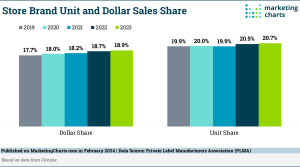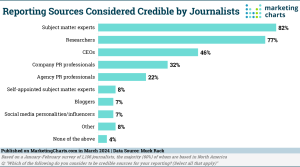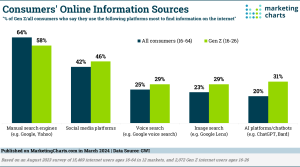 A recent study from Women’s Wear Daily (WWD) and Berglass+Associates takes on “retailers’ readiness for the Millennial generation,” arguing – via a survey of senior retail executives – that many are unaware of key points about the generation, such as its spending power and purchase decision influencers. Given that the definition of Millennials varies widely from one study to the next and that behavioral tendencies don’t always have fixed age breaks, it makes some sense that retailers could have trouble with the pop quizzes. It’s harder to understand why many retailers aren’t even researching this generation.
A recent study from Women’s Wear Daily (WWD) and Berglass+Associates takes on “retailers’ readiness for the Millennial generation,” arguing – via a survey of senior retail executives – that many are unaware of key points about the generation, such as its spending power and purchase decision influencers. Given that the definition of Millennials varies widely from one study to the next and that behavioral tendencies don’t always have fixed age breaks, it makes some sense that retailers could have trouble with the pop quizzes. It’s harder to understand why many retailers aren’t even researching this generation.
One of the main points the study makes is that three-quarters of respondents underestimate the spending power of Millennials, which the authors put at $200 billion, citing 3rd-party research. It’s unclear the methodology used to arrive at that figure, though tracing the source down the internet rabbit-hole leads to this book, published in 2009. The book used for its definition of Gen Y a birth range of 1978-2000, which would translate roughly to 13-35-year-olds as of this year. That’s certainly a wide age range: the Pew Research Center, for example, uses an age range of 18-29 for its definition of Millennials.
So perhaps retailers can be forgiven for not getting that $200 billion figure right. Another one in their defense: the WWD study also indicates that only half of respondents are aware that Millennials will outspend Baby Boomers within 5 years, again citing 3rd-party research. But a 2012Â report from Nielsen and BoomAgers [pdf] suggests that by 2017, half of the US population will be aged 50 and up, and these adults will control 70% of disposable income. It’s hard not to see that translating into spending power, and easier to see why there might be some confusion on relative spending power.
The point is not to say that the study lacks for usefulness (it doesn’t), but that focusing on unique data points that could be contestable shouldn’t obscure the bigger picture – which is that many retailers don’t seem to be researching this generation.
In the end, consumers are individuals – and treating any group as a cohesive unit can be problematic. For example, pigeon-holing Millennials into different “traits” such as “socially conscious,” “narcissistic,” and “financially cautious,” can also be fraught with problems. As one study from BCG noted last year, many of the stereotypes associated with Millennials can be challenged.
But even acknowledging that, there are still some patterns and behaviors that can likely emerge out of research into age brackets, even if the insights are not fully inclusive. (It’s tough to argue, for example, that technology adoption isn’t higher among younger groups, or that their media habits don’t differ from their older counterparts.) That’s why it’s harder to understand why retailers responding to the survey aren’t conducting their own research on Millennials. Whether or not Millennials will be the country’s biggest spenders, and whether or not they’re lazy or hardworking, one would guess that retailers would want to try and decipher this for themselves. 6 in 10 respondents apparently aren’t interested. (Requisite disclaimer: the study does note that this is a qualitative study that cannot be broadly applied to all retail executives.) Abstaining from any kind of research into this demographic – no matter how difficult it is to decipher – seems curious.
Other Findings:
- Slightly less than half of the respondents who target a broad base of consumers have distinct marketing strategies for reaching each generation.
- 45% say they focus on environmental sustainability, and an equal percentage use cause marketing (these are believed to be close to Millennials’ hearts).
- 44% offer benefits in exchange for personal information, and 34% believe that privacy is “not at all important” to Millennials.
- One-quarter of respondents believe that online brand advertising is the top influencer of Millennials’ purchasing activity, while 7 in 10 believe that friends’ opinions are the top influencer.
About the Data: The data is based on a survey of 121 US business leaders professional involved in retail. Types of retail organizations represented are brick-and-mortar (84, 61 with e-commerce), pure-play (37), direct mail order catalog (17) and TV home shopping (3). All respondents are Director or above, and one-third are President or CEO. 86% are involved in marketing for their organizations.

























